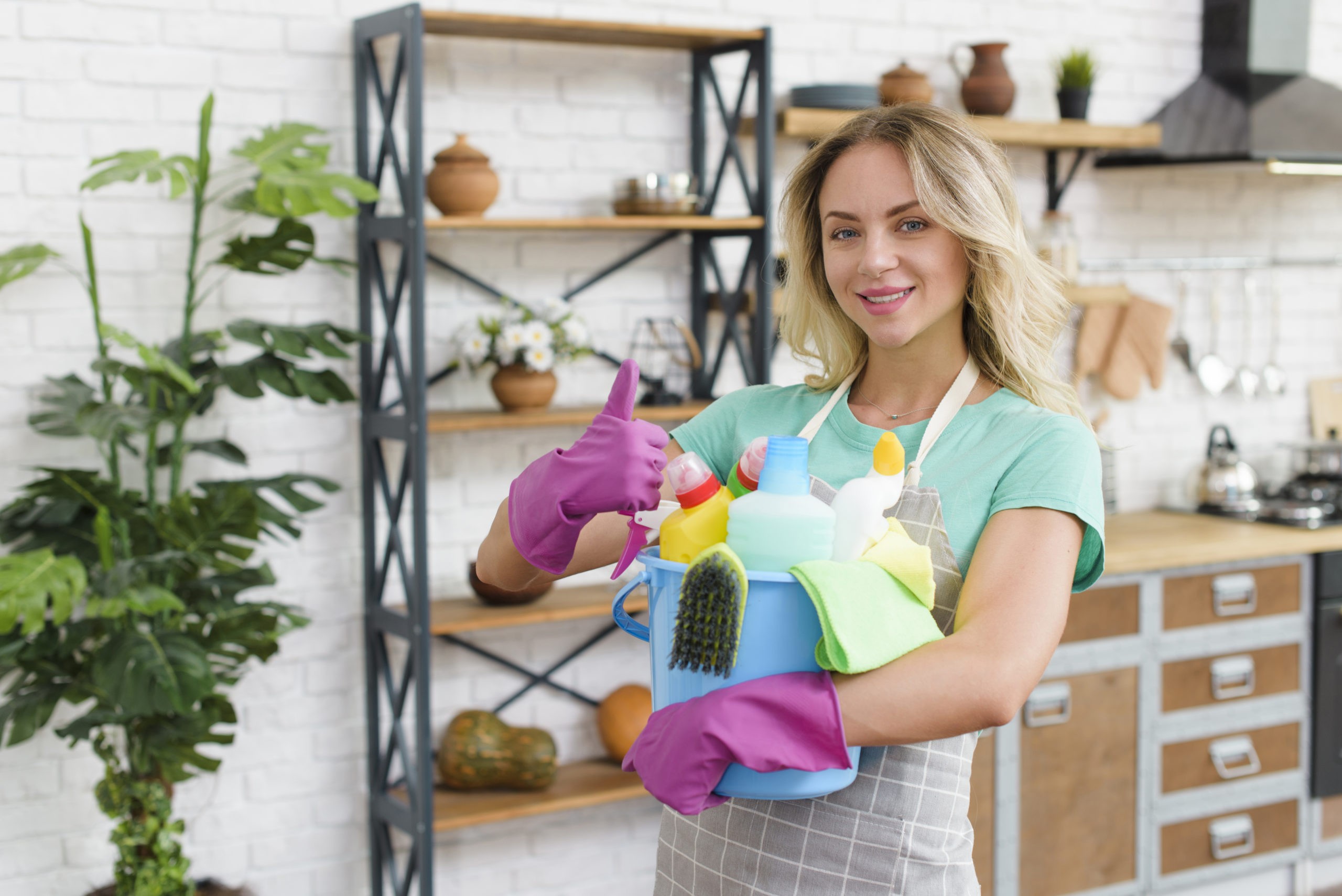Full article with thanks to https://www.goodhousekeeping.com/uk/house-and-home/household-advice/a31344990/coronavirus-clean-germs-viruses/
Clean with confidence – the expert knowledge you need to keep bacteria and viruses at bay
Since the spread of coronavirus (COVID-19) hit the headlines, hygiene has become a hot topic. We all know that simple measures such as hand washing, and using and disposing of paper tissues, can help stop the spread of this and other illnesses. But as some germs are able to survive on hard surfaces for several weeks – even months – is there more we could be doing to give our homes a really deep clean? Here’s the cleaning knowledge you need to keep bacteria and viruses at bay in your home.
1. Clean then disinfect
Use a two-step method – cleaning first then disinfecting – to tackle surfaces such as kitchen counters, table tops and bathroom surfaces so dirt, soap scum or food residue is removed. To clean, either spray the surface with distilled white vinegar and then wipe down with a clean cloth or simply use a microfibre cloth with warm water, or a cleaning cloth dipped in detergent solution and wrung out fully. To disinfect against viruses as well as bacteria, Middlesex University immunologist Dr Darshna Yagnik has the following advice: ‘Use a disinfectant which is alcohol-based, or use rubbing alcohol with a strength of at least 70%. Alternatively use household bleach containing sodium hypochlorite diluted in cold water. Both methods should kill viruses quite quickly by breaking down their cell walls.’KINZIE RIEHMGETTY IMAGESAdvertisement – Continue Reading Below
2. Leave your shoes by the door
Shoes don’t just carry dirt into our homes – they also have the potential to introduce germs. For this reason, it’s best to make your home a ‘shoes-free’ zone and to clean hard floors regularly, says Verity Mann, ‘Start by vacuuming or sweeping hard floors to get rid of loose dirt then mop with a warm solution of disinfectant,’ she advises. ‘Take care not to over-wet laminate flooring as this could cause it to warp.’
GHI TIP: If you have vinyl flooring, it’s best to follow the manufacturer’s cleaning advice, which may recommend using a specialist product or avoiding some cleaners altogether. If you don’t, you risk invalidating any warranty the flooring is covered by.
3. Don’t overlook ‘high touch’ surfaces
It’s easy to remember to clean and disinfect obvious germ hotspots such as the toilet and kitchen surfaces. But other frequently touched surfaces in our homes need attention, too – think door handles, light switches and bannisters.
Use a solution of bleach (following the dilution recommendations on the label) or another disinfectant to wipe handles and doorknobs then dry them thoroughly with a clean cloth. If using bleach, ensure to rinse the area you are cleaning after applying it. For obvious electrical safety reasons, you should never spray anything directly onto a light switch. Instead, make up a disinfectant solution in an old spray bottle and spray this lightly onto a microfibre cloth, then use this to wipe the switch and switch plate. Buff with a clean, soft cloth or a fine microfibre cloth for a satisfying shine.
4. Pay attention to shared devices
Tech that’s used by the whole family, such as the home phone, remote controls and games console controllers, may also be microbe-magnets. To clean them, start by removing dust with a soft cloth, then use a microfibre cloth sprayed lightly with water to wipe away grime, followed by a clean cloth spritzed with a disinfectant solution to get rid of germs and viruses. A cotton bud can be handy to clean the small areas between buttons. RELATED STORY4 gadgets you should be cleaningAdvertisement – Continue Reading Below
5. Use steam power
Steam is a great ally when it comes to killing germs, and can help lift dirt and grime at the same time. Steam cleaners can be used on a range of waterproof, sealed surfaces around the home – so not wooden floorboards, for instance – and with the right attachments they can also be used to clean ovens and hobs, too. Again, if you have vinyl flooring, check the flooring manufacturer’s guidance first.
6. Clean cleaning cloths thoroughly
When it comes to hygienic cleaning, a ‘one cloth fits all’ approach is no good. If you use cloths and sponges to clean, switching to a clean one when you finish cleaning one surface and before you move on to another will help stop the spread of bacteria and viruses. If you use microfibre cleaning cloths, manufacturers such as e-Cloth say that rinsing them regularly and thoroughly under warm, running water while you clean is enough to get rid of almost all the bacteria that may have built up in the cloth. In theory, this should mean you can carry on using the same cloth for longer before switching to a clean one. We wouldn’t recommend using the same cloth in different rooms, though, and e-Cloth doesn’t make any claims about how effective its cloths are at tackling viruses.
Microfibre cloths will clean most effectively when you use them with warm or hot water (this helps open out the fibres) and when you fold the cloth into a pad, which helps the cloth make the best possible contact with the surface you’re cleaning. Microfibre cloths will still need machine washing at the highest temperature possible after you finish cleaning, just like other cloths.
MAKE YOUR DISINFECTANT WORK HARDER!
How effective a disinfectant is at killing germs and viruses doesn’t just depend on its ingredients – the length of time it is left to work (known as ‘contact time’) also comes into play. ‘This ‘contact time’ is needed to get the most out of your disinfectant,’ explains microbiologist and author of The Germ Code, Jason Tetro. ‘Use a product that claims to kill 99.9% of bacteria and viruses, and ensure you leave it to work on a hard surface for at least one minute but preferably three minutes.’
Full article with thanks to https://www.goodhousekeeping.com/uk/house-and-home/household-advice/a31344990/coronavirus-clean-germs-viruses/

